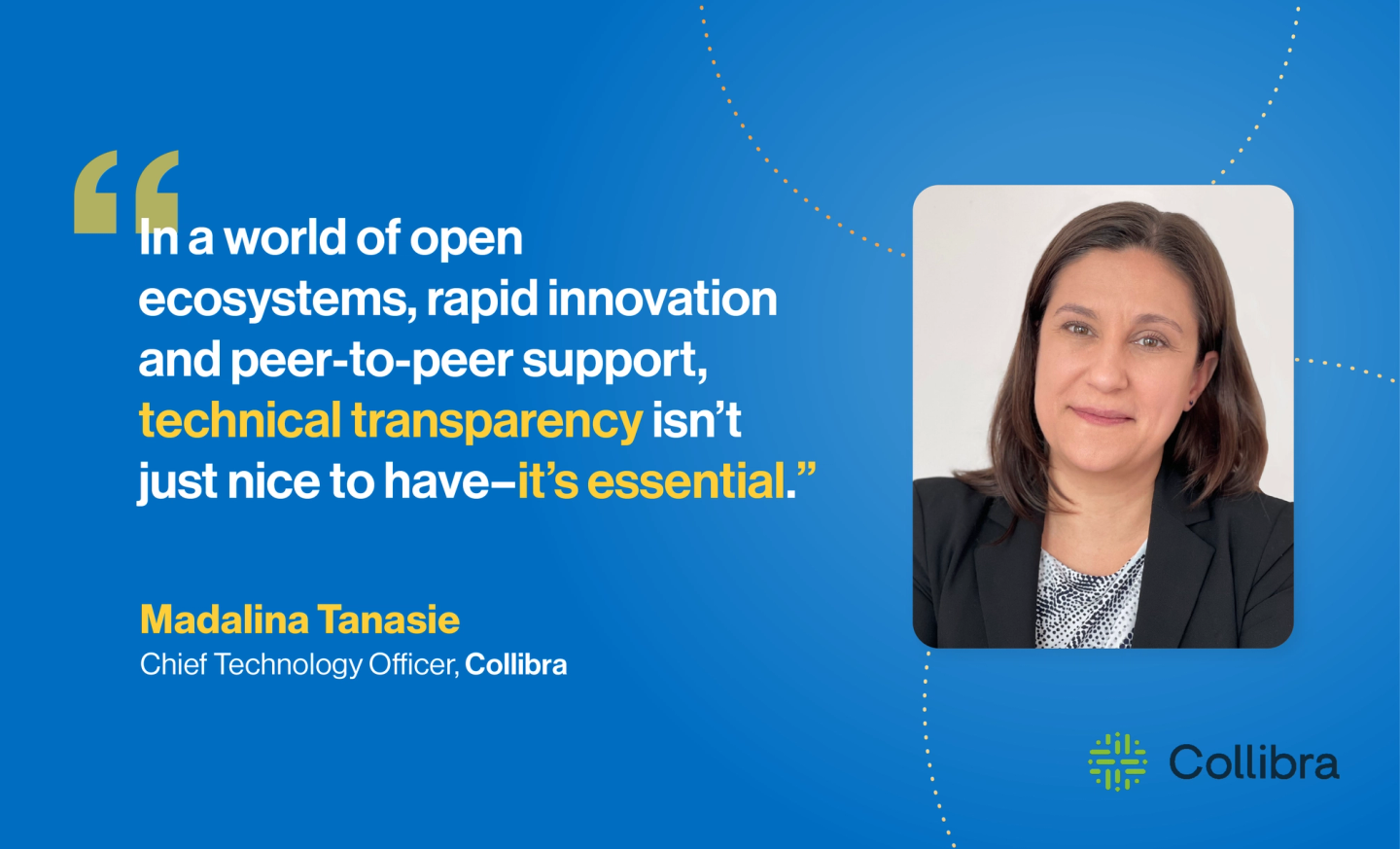Why technical transparency matters in communities

When people think of an online technical community, they often picture a forum for asking questions, browsing documentation or troubleshooting specific issues. But in practice, a well-run community is more than a Q&A space—it’s part of the operational ecosystem. It works because members exchange information openly, validate each other’s findings and share solutions based on real-world experience.
The Collibra Community, for example, has over 11,000 members who contribute by learning best practices, sharing insights and offering implementation guidance. The key enabler here is technical transparency.
What we mean by technical transparency
In a community context, technical transparency means clearly explaining how something works—including known limitations or current defects—and providing enough detail for others to understand the reasoning or constraints behind decisions. It’s not about having the perfect answers; it’s about exposing the process so others can learn and build on it.
In a world of open ecosystems, rapid innovation and peer-to-peer support, technical transparency isn’t just nice to have–it’s essential. It’s what enables members to collaborate effectively and keep pace with change.
Why communities depend on transparency
A product-centric community does more than provide support—it becomes part of the development and operational feedback loop. Transparency shapes how information flows, how people approach problem solving and how they engage with one another.
Here are three practical reasons that a transparent approach matters:
1. Trust and credibility
When a company acknowledges limitations, shares roadmap context or discusses open issues plainly, it signals respect for users’ time and expertise. Over time, this candor builds a reliable technical history the community can reference.
2. Faster learning
Well-documented answers and example implementations help others avoid repeating the same work. This accelerates onboarding and reduces the number of unresolved threads or duplicated troubleshooting efforts.
3. Better collaboration
Building on incomplete or inconsistent information slows integration work. When members understand why a system behaves a certain way—not just what it does—they can design extensions and modifications that align more closely with underlying architecture and constraints.
How we practice transparency in the Collibra Community
At Collibra, transparency isn’t just a buzzword–it’s how we operate. Here’s what it looks like in the Collibra Community:
- Open Knowledge Base and solution threadsWhether it’s troubleshooting a bug or explaining a design decision, we keep discussions and Knowledge Base articles accessible and searchable for everyone.
- Honest replies about limitations or workaroundsSometimes the answer isn’t perfect–and that’s okay. We aim to be honest about what’s possible today and what’s coming soon.
- Participation from Product, Engineering and SupportCommunity is a team sport. We bring our internal experts into the conversation so users get answers straight from the source.
Transparency builds trust. Trust builds community.
When we’re open about how our products work and where they’re headed, we’re not just solving support tickets–we’re building something bigger. A community where everyone feels heard, informed and empowered to contribute.
If you’re a data professional, customer or partner who wants to connect, join us in the Collibra Community. Dive into discussion threads, share your insights, ask questions and help shape the future of data intelligence–together.
In this post:
Keep up with the latest from Collibra
I would like to get updates about the latest Collibra content, events and more.
Thanks for signing up
You'll begin receiving educational materials and invitations to network with our community soon.
